Happy Monday.
Here are the most noteworthy items our editors and readers came across in the past seven days…
Spare us the gimmicks: As cities work to get folks back onto public transit, Vice writer Aaron Gordon says the answer isn’t in giveaways or promotions; but simply to make the service efficient and reliable.
Anti-trans fallout: In a CyclingNews opinion piece, Anne-Marije Rook makes a strong plea for USA Cycling to remove all events from Arkansas due to anti-transgender laws that have been passed in the state.
Dijon Kizzee should not be dead: The L.A. Times took a deep dive into the shooting of Black people by police officers and found 16 cases since 2005 that were triggered by a minor bicycle traffic equipment or traffic violation.
Cars as king: Oklahoma is just the latest Republican-led state to pass a law that increases the punishment for protesting in the street and absolves drivers from harming people who are taking part in them.
Still masking on the bike? National Geographic asks the experts about best practices of outdoor mask wearing and a golden rule seems to be “Distance, duration, and intensity,” of exposure.
Advertisement
E-scooters in New Yorker: The esteemed publication has an overview and update on how e-scooters are doing in New York City, with quotes from “A colonel in the war on cars,” former Transportation Alternatives leader Paul White.
Helmet laws — enforced by police — are bad: This article is framed around a Seattle case where a driver hit a homeless man on a bicycle and the victim was cited for not wearing a helmet (the driver got off free).
“Leaving value on the table”: Excellent analysis via Strong Towns about why a major high-rise development didn’t lead to the livable streets/promenade environment that was hoped for.
Bike trailer power boost: Biomega has a new cargo trailer that includes a pedal-sensing motor to help push you (and your load) along.
Negative externalities: Interesting Q&A with a pastor turned urban planner who’s written a book about how car windshields — much like phone screens and televisions — make us lonelier and less considerate of others.
BIPOC instructors: The League of American Bicyclists can now offer scholarships to Black, Indigenous and people of color who want to become certified cycling instructors thanks to a grant from Quality Bicycle Products.
— Jonathan Maus: (503) 706-8804, @jonathan_maus on Twitter and jonathan@bikeportland.org
— Get our headlines delivered to your inbox.
— Support this independent community media outlet with a one-time contribution or monthly subscription.



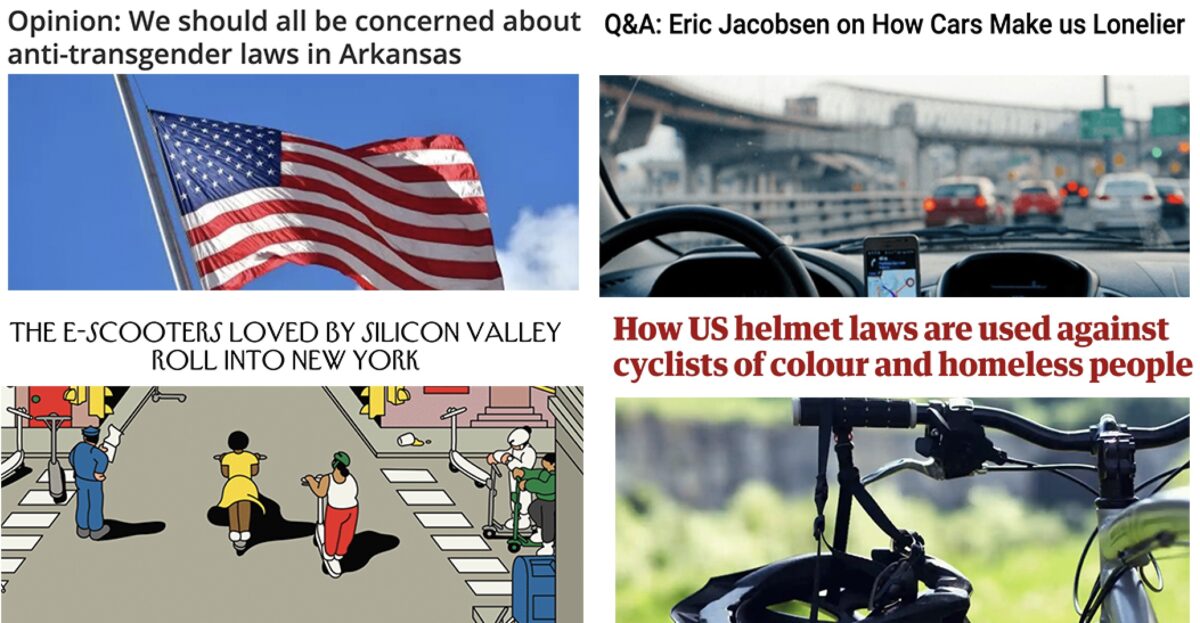
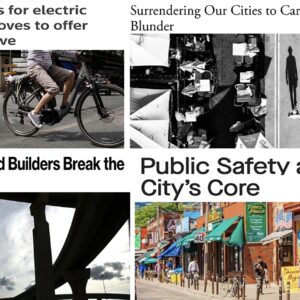
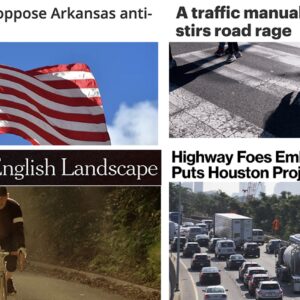
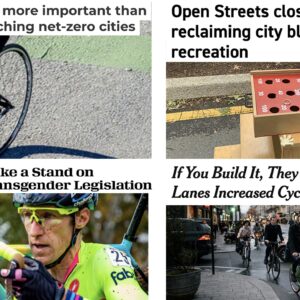
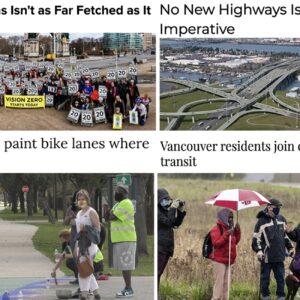
Thanks for reading.
BikePortland has served this community with independent community journalism since 2005. We rely on subscriptions from readers like you to survive. Your financial support is vital in keeping this valuable resource alive and well.
Please subscribe today to strengthen and expand our work.
Spare us the Gimmicks: One of the tragedies of public transit, especially in smaller cities, is how often the agencies themselves are run by officials who only drive cars, who simply are not dependent on the public transit they purport to operate. Hence the need to think of gimmicks, to demonstrate to their board that they are doing something to increase ridership; unfortunately the transit board and the local city council are often just as guilty on not using public transit either.
And surprise surprise, they are finding that buses, when properly used, do better than subways/trains. Trimet, you taking notice?
I’ll never forget how impressed I was one day back in the ’90s when I saw then-mayor Vera Katz riding the bus.
Q How is a Democratic legislator like a cop?
A They both drive to work.
Two things on the helmet article.
1. Biking without a helmet is a low-risk activity. It’s getting hit by a motorist while not wearing a helmet that is dangerous. To me, it’s a bit like issuing citations to people who don’t lock their doors when they leave the house. Should you lock your door? Of course. But at the end of the day, the risk from not locking your door comes purely from the actions of others. Punishing people financially for not adequately protecting themselves from other folks dangerous behavior seems backwards to me.
2. The topic and video really highlights how police are able to use the criminal injustice system to punish and reward people they identify as part of their in group and out-group. How many times have we seen non-injury crashes where the motorist does something like hit a pole or flip their car and walk away without a citation? Yet another reason to take traffic enforcement away from the police. They are unable to put aside their racial and class bias and it shows.
…you leave Tiger out of this…
/s
How do you feel about seatbelt laws?
Also, I know someone who had permanent and life-altering brain damage after getting thrown from his bike without a helmet when his bike tire got caught in rail line track. I have another friend who was hit by a car on his bike, but the driver wasn’t at fault, he unintentionally ran a stop sign when his brakes weren’t effective on the wet pavement while he was on a downhill (he was fine other than some scrapes and bruises thank goodness, but he was also a consistent helment wearer). I also know somoene else who wasn’t very experienced, and broke her wrist while riding, because the spun out on a pile of wet leaves (as far as I remember she didn’t hit her head, but easily could have in a crash like that). So no, helmet laws also protect riders from their own actions, and from just plain old bad luck.
Helmets do protect people, but we don’t really have evidence that helmet laws do much of anything for helmet rates. For example, Seattle and Portland have very similar rates of helmet wearing, but they have a helmet law, and we do not.
Should we have public health guidance that encourages helmet wearing? Sure!
Should cops be giving people tickets for not wearing helmets? Absolutely not.
The point isn’t whether or not biking without a helmet is dangerous*, it’s that it is none of society’s business. We have a strong interest in regulating activities that pose significant danger to others, but should not be regulating activities that endanger the user alone. Some of the things derided as “nanny-statism” fall into the former category and should still be regulated, but this is clearly the latter. The argument that it’s society’s business because of the cost of accidents is insufficient, in my view. Ain’t nobody’s business whether you do.
(For the record, I don’t support mandatory seatbelt laws – for adults – either).
* Well, of course it is dangerous. I personally witnessed a solo skateboard crash a few years ago on the US-26 MUP, in which the victim suffered severe head injuries. I believe that ANY activity (biking, skateboarding, riding electric scooters, etc.) in which you move faster than than a running pace (meaning you can no longer easily land on your feet if something goes wrong) is high-risk in terms of potential head injury. I’ve seen it happen, and it is ugly. However, while I personally wear a helmet almost all the time when doing these things, I do NOT believe in forcing others to do so.
I don’t think there is much evidence that not wearing a helmet during transportation cycling endangers the user. Unfortunately, transportation cycling is so non-existent in this society that people tend to lump in cycling for exercise, recreation, leisure, play, and sport even though transportation cycling is almost certainly far safer than these other types of cycling.
IMO, the problem is not the “nanny state” but a society-wide lack of empathy that attempts to individualize destructive behavior (sin, evil, personal choices, blame etc) because USAnians are too afraid to acknowledge that their culture’s moral basis is rotten.
Regarding “Leaving Value on the Table” it looks like that is where the soon to be Former Hollywood Transit Center is headed. The buses are being kicked out, rather than improving connections between bus and MAX. Housing on top of a parking structure seems rather uninspired. TriMet has not been transparent with their planning process, and I am not expecting a welcoming people-place to be the end result.
I believe Trimet has made the decision to not move forward with those changes. I thought the plan was good, personally. It was going to shave several minutes off of the bus lines, since they would no longer have to do the loop through the transit center. I think a one-block connection is fine, but I understand that some might not want to cross a busing street to transfer to a west/southbound bus.
But more importantly, we need more housing next to high-capacity transit. Every station along the MAX line should have multi-story housing with commercial on the ground level. Nothing exists in a vacuum. Hollywood TC as it exists today could be a space where 100+ people live right next to transit, grocery stores, bike facilities, etc.
TriMet has only postponed the bus changes. They are going ahead with their plans. They will not reveal the BRIDGE Housing proposal until after they sign a contract. What they have revealed so far is housing above a parking structure. This will not be the high quality design that you want. There will be no commercial on the ground. Transit could be integrated into a development, and signal pre-emption for the buses could reduce the delay, which is largely a combination of boarding time for the many transferring passengers plus schedule recovery time needed because of the long length of Lines 75 and 77. There is also currently a toilet for bus drivers (will it go away?), whereas a people-oriented plan would have a public rest room. I could go on, but transit dependent people who need to transfer as part of their trips are generally dismissed in the planning process in this region.
Cars make us lonelier:
years ago when I was considering a PhD, I was going to do a thesis on a similar topic but from a socio-biological perspective – how urban design and zoning influences behavior.
In many communities, one gets into a car in an attached garage and drives to another garage or parking lot for work. There is a literal barrier between that person and others the whole way. That changes the dynamics of interaction.
The idea of being “pushed” by your trailer just seems far from ideal. I can’t image that sensation is comforting when turning, or braking hard. How fast does it cut out when you stop pedaling?
The electric bike trailer looks cool. I like the idea of the assist matching the pull, like there’s no trailer. You could take this concept and also apply it to e bikes. The assist matches the bike weight plus hills. So ebiking would be like biking without any hills, or bike.
The one wheel, high mount, high kid seat Ein design does look wobbly, however. A two wheel, axle attached design with lower seats would be more stable. I also couldn’t find info on battery range.
And if you added another wheel to the front, it would further stabilize the ride, allowing the addition of a safety cage (which could also shield you from the weather) and additional cargo capacity. It would also be like biking without any hills or bike.
If only someone would build this miracle device :p
re: Dijon Kizzee … another example is Byron Williams, who was killed by police in Las Vegas after being stopped for a faulty bike taillight. Foreshadowing George Floyd’s fate, he said “I can’t breathe” 17 times before he died.
In the cemetery behind George Floyd Square for victims of police violence, among a couple hundred others there is a tombstone for Byron, and as a fellow bike rider I think of him every time I visit. I can’t remember if Dijon has one there too, but will check next time I’m there.
If you’re still bummed by the loss of the food carts at SW 10th / Alder, check out “Leaving Value on the Table”. If you wonder why buildings sit vacant, follow the links marked “here, here, and here” in that article.
Portland’s got a lot of ground to make up in street front retail and it’s going to take a hard pull to do it.